August 27 - Continuation of our Brasov Walking Tour
After she finished her very short history lesson, she asked us what we thought of the Brasov sign that is perched at the crest of Tampa mountain, and is visible from virtually every part of town
. I commented that it looked like the Hollywood sign in the US and seemed out of place in contrast to the charm of the town below. She told us that most of the locals agreed and generally hold negative feeling toward the Brasov sign. She then told us that during the Communist period, there were dark leafed trees planted that spelled out "Stalin City" but, once Bulgaria gained independence, the trees were cut down. It's possible, however, to hike up to where the sign is and see evidence of the old tree stumps. In her opinion, the current kitschy sign is much more preferable to the one that preceded it. And, I must admit, when having trouble trying to find the center of town, which was the case with us on a few occasions, the Brasov sign is, definitely, a guiding landmark.
The Black Church, just a half block away from the town square, and which some claim to be the largest Gothic style church in Southeastern Europe, was our first stop. Construction began during the late 14th century and was originally a Roman Catholic structure known as the Church of Saint Mary
. The Catholic services were replaced with Lutheran ones during the Protestant Reformation, coinciding with the influence of Johannes Honterus whose majestic statue we saw on the side of the Church. The structure was partially destroyed during a great fire set by invading Habsburg forces on April 21, 1689 and the smoke badly blackened the walls. The restoration lasted about 100 years and, during this time the place of worship become known as Biserica Neagra (the Black Church) and the name has stuck. Today, The Black Church is considered to be the greatest place of worship in Romania and, with its impressive dimensions, is able to house about 5,000 people.
Our guide pointed out an odd statue, on the roof of the church, of a boy leaning forward as if he had dropped something on the ground. Apparently, no one knows for sure why that statue was there but the most popular legend, of several, is that the boy was helping with the construction of the church and, when his boss told him to check if the wall was straight, he leaned over the wall and fell
. Full of remorse and guilt, the boss ordered that a statue be erected in his honor.
We didn't go inside on the tour but planned go later in the week. Our guide told us that, when we did go inside, we could expect to see the Black Church’s organ, considered to be one of the largest on the European continent, with 4000 pipes. It was built between 1836 and 1839 and is famous for it sonority. We would also see one of the largest collections of old carpets from Brussa Usak and Giordes regions in Asia Minor. The beautiful carpets line a big section on the walls and date back to the 17th and 18th centuries. They were donated. over the course of many years, by the craftsmen, merchants and citizen of the city and represent an invaluable thesaurus of the Black Church. Finally, the biggest bell in the country, weighing 6.3 tons, can be found in the tower of the church.
We continued winding our way through cobbled streets until we came to Strada Sforii, whch means "String Street." It is the narrowest street in Brasov and believed to be one of the narrowest streets in Europe, third only to one in Germany and another in England. It was intially built as a corridor that firemen could use and first mention of it dates back to 17th century documents. With a length of 260 feet and a width varying between 44 snd 53 inches, Strada Sforii is now a big tourist attraction
. As we walked through this interesting street, we were able to touch the walls on both sides.remaining entrances to the fortified city, we stopped jus on the other side for some additional history. This
As we left the inner city, through one of the two original entrances to the old city, we entered the part of the town known as the Romanian section as, during these ancient times, only Germans were allowed to live inside the old city. For anyone else it was necessary to pay a tax to enter and then, for only 3 days. If you were caught staying longer, you would be executed and had to pay for the quality of the execution you wanted. Sounded pretty barbaric.
And, speaking of barbaric, our guide gave us a lengthy history of Vlad III, known as Vlad, the Impaler. Vlad was prince of Wallachia, three times between 1448 and his murder in January of 1477 and, during his reign, was thought to have impaled 20,000 people. Oddly enough, he was considered a hero as he was impaling people who broke the law and who were against the Ottoman Empire. Vlad’s reputation for cruelty and brutal punishment gave rise to the name of the vampire Count Dracula in Bram Stoker’s 1897 novel. However, regarding “Dracula’s Castle”, one among several locations linked to the Dracula legend as the home of the title character, there’s no evidence that Stoker knew anything about this particular castle
. The location that Bram Stoker actually had in mind for Castle Dracyula, while writing his novel, was the empty mountain top of Mount Izvorul Callmanuli, located 6,670 feet up in the Transylvanian Calimani Alps. Our guide told us that, although the exterior of the tourist attraction, Dracula’s Castle, is quite impressive,the interior is not much to see so, we decided against going back to tour the castle.
We walked over to Union Square in the Romanian part of Brasov then visited the Romanian Orthodox St. Nicholas Church. It was established in 1292 in the Gothic style, but was later redeocrated with Baroque style architectural elements. When we arrived, there was a wedding about to begin that was fun to watch from the decorated and very fancy wedding car.
We finihed our tour by hiking up to the Black Tower, an 11 meter high massive tower, built in the XIVth century for defense against the enemies. It survived two fires caused by lightning and, after the first fire in 1599, the tower was named The Black Tower due to the charred walls, not unlike the Black Church. The last time it functioned as a watchtower was in 1756 and today, with the glass roof that was bult in 1995, it serves as a wonderful spot to view and take photos of the village below as well as housing various temporary exhibitions.
After the tour, we headed back to Rucar which was a bit of a challenge in the dark. It was a little scary driving over Bran Pass but, Miles, our driver extraordinaire, was up for the task and got us home safely. It had been a long day so we all welcomed a good night’s sleep.
WALKING TOUR IN BRASOV
Saturday, August 27, 2016
 Brasov, Transylvania, Romania
Brasov, Transylvania, Romania
Other Entries
-
13JEWISH QUARTER WALKING TOUR
Aug 0819 days prior Prague, Czech Republicphoto_camera30videocam 0comment 2
Prague, Czech Republicphoto_camera30videocam 0comment 2 -
14EXCURSION TO CESKY KRUMLOV
Aug 0918 days prior Prague, Czech Republicphoto_camera21videocam 0comment 2
Prague, Czech Republicphoto_camera21videocam 0comment 2 -
15CESKY KRUMLOV CASTLE & LAST SUPPER IN PRAGUE
Aug 0918 days prior Prague, Czech Republicphoto_camera22videocam 0comment 9
Prague, Czech Republicphoto_camera22videocam 0comment 9 -
16A FEW FINAL PHOTOS
Aug 1017 days prior Prague, Czech Republicphoto_camera19videocam 0comment 6
Prague, Czech Republicphoto_camera19videocam 0comment 6 -
17WE WELCOMED THE CHANGE OF PACE
Aug 1017 days prior Horní Polubný, Czech Republicphoto_camera32videocam 0comment 4
Horní Polubný, Czech Republicphoto_camera32videocam 0comment 4 -
18THE GLASS FACTORY AND CROSSING INTO POLAND
Aug 1215 days prior Horní Polubný, Czech Republicphoto_camera17videocam 0comment 0
Horní Polubný, Czech Republicphoto_camera17videocam 0comment 0 -
19POLAND AND BACK...FOR REAL
Aug 1314 days prior Karpacz, Polandphoto_camera23videocam 0comment 7
Karpacz, Polandphoto_camera23videocam 0comment 7 -
20OFF ON ANOTHER DAY EXCURSION TO LIBEREC
Aug 1413 days prior Liberec, Czech Republicphoto_camera33videocam 0comment 11
Liberec, Czech Republicphoto_camera33videocam 0comment 11 -
21VISITING THE ROCK CASTLES
Aug 1512 days prior Malá Skála, Czech Republicphoto_camera40videocam 0comment 3
Malá Skála, Czech Republicphoto_camera40videocam 0comment 3 -
22GOODBYE TO HORNI POLUBNY AND OFF TO VENICE
Aug 1611 days prior Prague, Czech Republicphoto_camera27videocam 0comment 0
Prague, Czech Republicphoto_camera27videocam 0comment 0 -
23FINALLY IN A NEW COUNTRY
Aug 189 days prior Vienna, Austriaphoto_camera24videocam 0comment 4
Vienna, Austriaphoto_camera24videocam 0comment 4 -
24ALBERTINA, SCHONBRUNN AND THE FABULOUS ZOO
Aug 198 days prior Vienna, Austriaphoto_camera29videocam 1comment 3
Vienna, Austriaphoto_camera29videocam 1comment 3 -
25SO MUCH TO SEE AND DO....AND IT'S PAM'S BIRTHDAY
Aug 207 days prior Vienna, Austriaphoto_camera46videocam 0comment 1
Vienna, Austriaphoto_camera46videocam 0comment 1 -
26MORE SIGHTS TO SEE ON ROD'S BIRTHDAY
Aug 216 days prior Vienna, Austriaphoto_camera24videocam 0comment 0
Vienna, Austriaphoto_camera24videocam 0comment 0 -
27OUR FINAL FULL DAY IN VIENNA
Aug 225 days prior Vienna, Austriaphoto_camera16videocam 0comment 1
Vienna, Austriaphoto_camera16videocam 0comment 1 -
28A NEW ADVENTURE....A NEW COUNTRY
Aug 234 days prior Yastrebets, Russian Federationphoto_camera47videocam 1comment 1
Yastrebets, Russian Federationphoto_camera47videocam 1comment 1 -
29NOW WE'RE IN ROMANIA...WE SURE GET AROUND
Aug 261 day prior Brasov, Romaniaphoto_camera22videocam 0comment 4
Brasov, Romaniaphoto_camera22videocam 0comment 4 -
30WALKING TOUR IN BRASOV
Aug 27 Brasov, Romaniaphoto_camera18videocam 0comment 0
Brasov, Romaniaphoto_camera18videocam 0comment 0 -
31ALL I CAN SAY IS.....BIZARRE
Aug 281 day later Sacele, Romaniaphoto_camera18videocam 0comment 2
Sacele, Romaniaphoto_camera18videocam 0comment 2 -
32PHOTO JOURNAL OF OUR SACELE HOME EXCHANGE
Aug 292 days later Săcele, Romaniaphoto_camera18videocam 0comment 5
Săcele, Romaniaphoto_camera18videocam 0comment 5 -
33VISITING THE LOVELY TOWN OF SINAIA
Aug 303 days later Sinaia, Romaniaphoto_camera26videocam 0comment 1
Sinaia, Romaniaphoto_camera26videocam 0comment 1 -
34OCTOBERFEST, SIGHISOARA THEN THE BLACK SEA
Aug 314 days later Sighisoara, Romaniaphoto_camera39videocam 0comment 3
Sighisoara, Romaniaphoto_camera39videocam 0comment 3 -
35ANOTHER COUNTRY, ANOTHER HOME EXCHANGE
Sep 026 days later Kosharitsa, Bulgariaphoto_camera29videocam 0comment 2
Kosharitsa, Bulgariaphoto_camera29videocam 0comment 2 -
36THE ENCHANTING VILLAGE OF SOZOPOL
Sep 048 days later Sozopol, Bulgariaphoto_camera34videocam 0comment 4
Sozopol, Bulgariaphoto_camera34videocam 0comment 4 -
37WE'RE ON OUR OWN
Sep 0610 days later Sveti Vlas, Bulgariaphoto_camera12videocam 0comment 2
Sveti Vlas, Bulgariaphoto_camera12videocam 0comment 2 -
38LAST FEW DAYS IN EASTERN EUROPE
Sep 0711 days later Sveti Vlas, Bulgariaphoto_camera21videocam 0comment 6
Sveti Vlas, Bulgariaphoto_camera21videocam 0comment 6 -
39MYSTERY OF THE MISSING LUGGAGE
Sep 1014 days later Istanbul, Turkeyphoto_camera5videocam 0comment 1
Istanbul, Turkeyphoto_camera5videocam 0comment 1 -
40SENSORY OVERLOAD
Sep 1115 days later Istanbul, Turkeyphoto_camera31videocam 0comment 9
Istanbul, Turkeyphoto_camera31videocam 0comment 9 -
41TAKSIM SQUARE AND THE POTATO SEARCH
Sep 1216 days later Istanbul, Turkeyphoto_camera34videocam 0comment 3
Istanbul, Turkeyphoto_camera34videocam 0comment 3 -
42MAYBE THIS IS WHAT IT LOOKS LIKE ON THE MOON
Sep 1317 days later Nevsehir, Turkeyphoto_camera29videocam 1comment 6
Nevsehir, Turkeyphoto_camera29videocam 1comment 6 -
43DAY TWO - CAPPADOCIA
Sep 1418 days later Nevsehir, Turkeyphoto_camera32videocam 0comment 5
Nevsehir, Turkeyphoto_camera32videocam 0comment 5 -
44LAST TWO DAYS IN ISTANBUL
Sep 1519 days later Istanbul, Turkeyphoto_camera29videocam 0comment 3
Istanbul, Turkeyphoto_camera29videocam 0comment 3 -
45CAIRO AND OUR FABULOUS NILE RIVER CRUISE
Sep 1721 days later Cairo, Egyptphoto_camera24videocam 0comment 5
Cairo, Egyptphoto_camera24videocam 0comment 5 -
46OUR NILE EXCURSION CONTINUES
Sep 1923 days later Luxor, Egyptphoto_camera35videocam 0comment 6
Luxor, Egyptphoto_camera35videocam 0comment 6 -
47VALLEY OF THE KINGS
Sep 2024 days later Luxor, Egyptphoto_camera34videocam 0comment 8
Luxor, Egyptphoto_camera34videocam 0comment 8 -
48EDFU AND KOM OMBO
Sep 2125 days later Aswān, Egyptphoto_camera36videocam 0comment 5
Aswān, Egyptphoto_camera36videocam 0comment 5

 Brasov, Transylvania, Romania
Brasov, Transylvania, Romania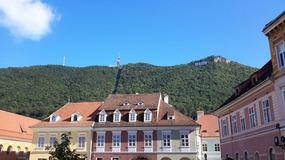
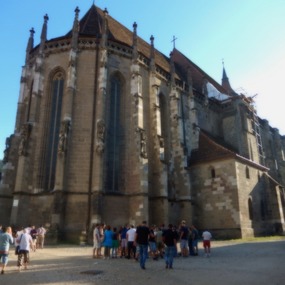
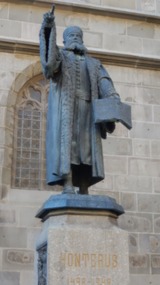

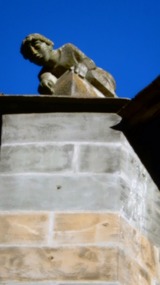











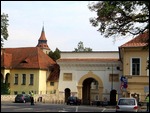

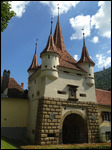







2025-05-22